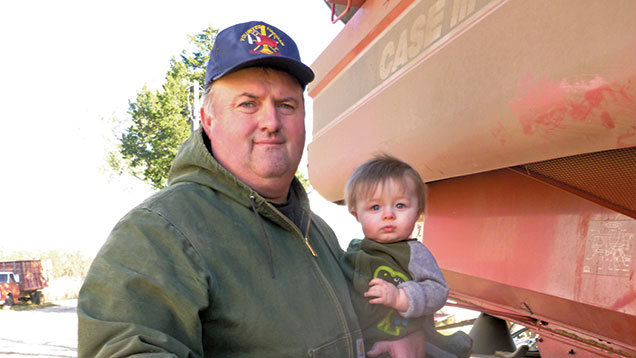Farmer Focus: Land prices across the pond skyrocket

January started with some very cold weather. Temperatures dropped to -17C at night and didn’t get above freezing during the day.
These have warmed up and for most of us, taking care of cattle has been the main priority, with a few guys spreading fertiliser.
See also: A proud farming history
Even though I have complained the price of land is too high, in early 2014 I bought 65ha of pasture that I had previously rented, and 16ha of arable land at the end of 2014 in a partnership with my parents.
We did not rent the 16ha, but my dad had tried to buy it twice during the past 30 years because his home farm joins it on two sides. All I will say about the price is the 291ha I already owned cost less than this 65ha did.
Although the pasture was expensive, the owners, grandsons of my deceased landlord, gave me a very good deal on it. The arable ground, on the other hand, was overpriced, as far as I am concerned.
Had we not farmed everything around it we would have sat on our hands and let someone else try to make it work.
I spent quite a few sleepless nights mulling that purchase over, knowing it might make my son some money someday, but probably never would make me any.
It is easy to be objective about buying land until a piece comes up that joins your current land. Usually you get one chance in a lifetime – the fact this has sold three times in my father’s lifetime is really unusual.
My hopes that falling grain prices would push down land prices were dashed in November when what was surely the highest-priced land ever sold in this county went for $9,470/ha (£6,273.60/ha).
This was for 132ha with 46ha of arable and a mixture of pasture and timber. It was a classic case of two people with money butting heads at auction. Prior to that, $6,150/ha (£4,074.20/ha) would have been considered a decent price.
Brian Hind farms 1,250ha of prairie land, of which 770ha is family owned and the rest rented. Of this, 330ha is arable cropping with maize, soya, grain sorghum, alfalfa plus a mix of rye, triticale and turnips for grazing by 200 beef cattle. Grassland is used to produce hay.

